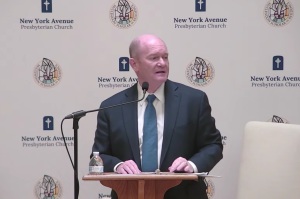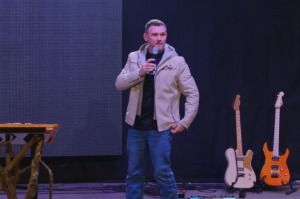Instruments of national suicide
Contemporary crises, ranging from COVID to economic and political upheaval, have revealed the fragility of our freedom, and brought into view perhaps two of the greatest threats to liberty in our time — judicial usurpation and presidential Executive Order.
In the hands of people who either don’t understand, or give little regard to Constitutional principle, these can be instruments of national suicide. They underscore that the greatest threats to liberty often come from within.
In 1838, twenty-eight-year-old Abraham Lincoln felt he was watching his country tear itself apart. Riots had broken out over slavery, and no doubt Lincoln also had in mind the 1837 assassination of abolitionist Elijah Lovejoy.

In that precarious period Lincoln spoke to the Young Men’s Lyceum, a gathering of rising leaders in Springfield, Illinois. Lincoln said that if ever there were a serious threat to American freedom it would “spring up amongst us... If destruction be our lot, we (would) ourselves be its author and finisher. As a nation of freemen, we (will) live through all time or die by suicide.”
And so, we come to a February 6 Christian Post story by Anugrah Kumar, headlined:
Supreme Court allows California churches to hold indoor services at limited capacity
Some will applaud the Court’s ruling apparently in favor of the churches. At the same time, there is reason to lament the fact that the Supreme Court — or any court for that matter — is “allowing” churches to meet, and to do so on terms laid down by the Court.
We must see the dangerous precedent in such a move by the Judiciary. A poisonous precedent lurks beneath its surface blessing.
Crisis has a way of driving us to desperation and the disordering that goes with it. In the frantic reaches to control COVID, government seems to have forgotten the First Amendment: “Congress shall make no law respecting the establishment of religion or prohibiting the free exercise thereof; or abridging the freedom of speech; or the right of the people peaceably to assemble, and to petition the government for a redress of grievances.” (Italics added)
Usurpation sneaks up on us from behind.
“The people never give up their liberties but under some delusion,” said Edmund Burke in 1784. Burke, an Englishman, was an intense observer of the French Revolution and its excesses. He could see that what the revolutionaries were calling “Liberte” was itself morphing into an oppressive system pretending to be a freedom-giver.
Early on, Thomas Jefferson had a more favorable view of the French Revolution, but also understood the creeping threat of the enlargement of government power in aborning America. On May 27, 1788, Jefferson, in a letter, warned: “The natural progress of things is for liberty to yield and government to gain ground.”
Thus, “liberty” extended by the Court to churches means that a branch of government has presumed it has the authority not only to grant the right of assembly but also to specify its parameters — in this case twenty-five percent of capacity, with no chanting or singing.
Again, we can rejoice that churches have sanction to meet, but mourn the fact that it must be sanctioned in the first place because another government agency—that of the State of California — had forbidden churches to assemble.
Not to be outdone, the State declared it would be monitoring the situation and perhaps issuing more guidelines.
Then there is the other internal threat to our liberty: Presidential Executive Order.
One of the most severe cases occurred in 1952 during the Korean War when President Harry S Truman, through an EO, sought, in effect, to nationalize steel mills. The Supreme Court declared this a violation of the Constitution, and its right of private property.
Truman perhaps had learned at the feet of his predecessor, Franklin D. Roosevelt. He issued a whopping 3,721 EOs. True, FDR was a wartime president, but many of his orders were used to structure his prime legislative initiative, the New Deal.
Both Republican and Democrat presidents have found the Executive Order handy in avoiding congressional or judicial mire. Republican Richard Nixon, my boss, issued 346, while Democrat Bill Clinton 364.
Much attention was focused on the Executive Order issue when President Obama said, in the face of congressional opposition to some of his intended policies, “I have a pen, and I have a phone.” David Davenport wrote in Forbes, that Obama had established a pattern “of unilateral action to set his agenda, advance it, and change it, well beyond ... the Constitution’s separation of powers doctrine.”[1]
It should be noted that Obama issued 276 Executive Orders while Trump 220. President Biden, as of February 26, 2021, was spewing Executive Orders at a rate that, if continued, would amount to 400 per year.[2]
Speaking of Executive Order power, Lincoln, in his 1838 speech was also concerned about a dominating tyrant emerging at some point through national crisis: “Is it unreasonable ... to expect that some man possessed of the loftiest genius, coupled with ambition sufficient to push it to its utmost stretch, will at some time spring up among us?”
Watch carefully over the next four years and be concerned—very concerned—about the enlargement of the Judiciary’s attempts to usurp freedoms, as well as the emergence of candidates who could easily cloak their passion for power and abuse the powers granted them through Executive Order.
And heed the words of John Adams when, amid the stirring of the American Revolution, he wrote: “The Constitution of Government once changed from Freedom, can never be restored... Liberty once lost is lost forever.”
[1]Obama's Executive Power Pen Is Already Worn Out (forbes.com)
[2]Executive Orders | The American Presidency Project (ucsb.edu)
Wallace B. Henley’s fifty-year career has spanned newspaper journalism, government in both White House and Congress, the church, and academia. He is author or co-author of more than 20 books. He is a teaching pastor at Grace Church, the Woodlands, Texas.



























